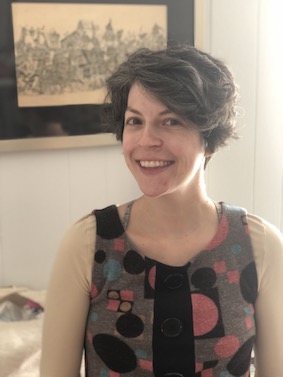Office: Room 1170, Dept. of Psychology Harvard University
Email: myfirstname_mylastname.at.fas.harvard.edu
Here’s the *archival* version of the website about my big longitudinal study, called SEEDLingS! (N.B.: data collection ended in July 2016).

ABOUT ME
As of Summer 2023, I am an Associate Professor at Harvard University’s Psychology Department.
Before moving to Harvard, I was at Duke in the Psychology & Neuroscience Department from 2016-2022. While there I worked alongside many wonderful PhD students, postdocs, undergrads, and high schoolers, growing the BLAB, and tackling questions looking at early word learning in infants and toddlers.I spent 2014-2016 as a Research Assistant Professor in the Brain and Cognitive Sciences Department at the University of Rochester, thanks to having received an Early Investigator Award from NIH. At UR I was also a faculty affiliate of the Center for Language Sciences. In 2013-14, I was a postdoctoral researcher with Dr. Richard Aslin.
With the SEEDLingS project, we conducted a longitudinal study that incorporates at-home video recordings with in-lab experiments, geared specifically at gaining a better understanding of how visual and linguistic experience interact in early word-learning.
The key question underlying my research is how infants learn language from the world around them. I’m interested in early lexical development, and how this interacts with other linguistic, cognitive, and social development more broadly.
During my PhD (completed in summer 2013), I worked with Dr. Dan Swingley trying to figure out how and when young infants learn the meanings of their very first words, and more generally, how word comprehension and word learning work. What we found was that around 6 months, infants start showing understanding of words for foods and body parts, and that around 10 months they start showing understanding of words like ‘uhoh’ and ‘eat’. For both kinds of words, performance increases dramatically around 12-14 months. We’ve seen this pattern in my lab many times since, and have dubbed this non-linear improvement the “Comprehension Boost.” A chunk of current work in the lab is targetted towards identifying what underlies that boost.
In several ongoing eye-tracking, corpus, and teaching studies I am trying to better understand how the word-learning process works, and am most recently interested in trying to tie these findings in with developments in other areas of language acquisition (e.g. phonology, morphosyntax), as well as other areas of social and cognitive development (joint attention, category formation, etc), in order to better understand the underlying mechanisms at play. We look at these questions mostly in children who are sighted and hearing, but in one line of work, in children who are blind or Deaf/Hard of Hearing as well.
Before graduate school I was a Baggett Research Fellow at the University of Maryland Linguistics Department, where I worked with Jeff Lidz, Bill Idsardi, and David Poeppel, using MEG and behavioral measures with adults, and the head turn preference paradigm with infants; some of that work is ongoing. Before that I was an undergraduate at NYU where I studied Language & Mind, Music, and French, and worked under Gary Marcus. My childhood and adolescence were spent in Columbus, Ohio, in a lively household with Russian immigrant parents, 3 sisters and a brother.
I am happy to send copies of any of our articles upon email request (or you can snag them from my Publications page).
SOME MEDIA ABOUT OUR RESEARCH
Click here to read about my latest research on the NIH Director’s Blog.
Click below to hear a short BBC interview with me about our 2012 PNAS paper.
A short video clip showing an infant’s behavior in our PNAS Study:
This video is part of the ancillary teaching materials for Erica Hoff’s Language Development textbook.
SOME SHARED RESEARCH TOOLS/RESOURCES…COMING SOON AND IN PROGRESS
- Once coded, the audio and video recordings from our (in progress) longitudinal corpus study will be shared through HOMEBANK and Databrary.
- A set of visual stimuli of objects from the MCDI (we’re sharing a bunch of our CDIs with wordbank too!)
- Interested in Naturalistic Home Recordings of Infants Language Environments? Check out DARCLE!
- R Markdown scripts that show how the stats/figures in our papers were generated
FORMER MENTORS AND COLLABORATORS
Richard Aslin
Dan Swingley
Jeff Lidz
Bill Idsardi
David Poeppel
Gary Marcus
PREVIOUS RESEARCH AFFILIATIONS
Duke Child Studies
DIBS/CCN
Rochester Baby Lab
Center for Language Sciences
IRCS
Penn Psych
Penn Infant Language Center
UMD CNL
UMD Project on Children’s Language Learning
NYU Center for Child Language
Yeled v’Yalda Research Institute
NSF GRFP
NSF IGERT
Elikorpus-created and maintained by my friend Dave Kush
THINGS I CARE ABOUT/ENJOY
Yoga (seeking new anusara-inspired studio in Cambridge!)
Local food: Clover Food Lab Red Earth Farm, Clark Park Farmer’s Market, Rochester Public Market
Bicycles
Classical music
Blueberries
Kiva
The New Yorker
Helping animals find good homes
